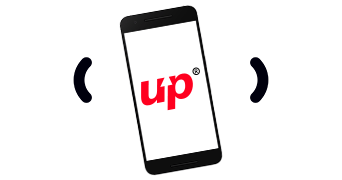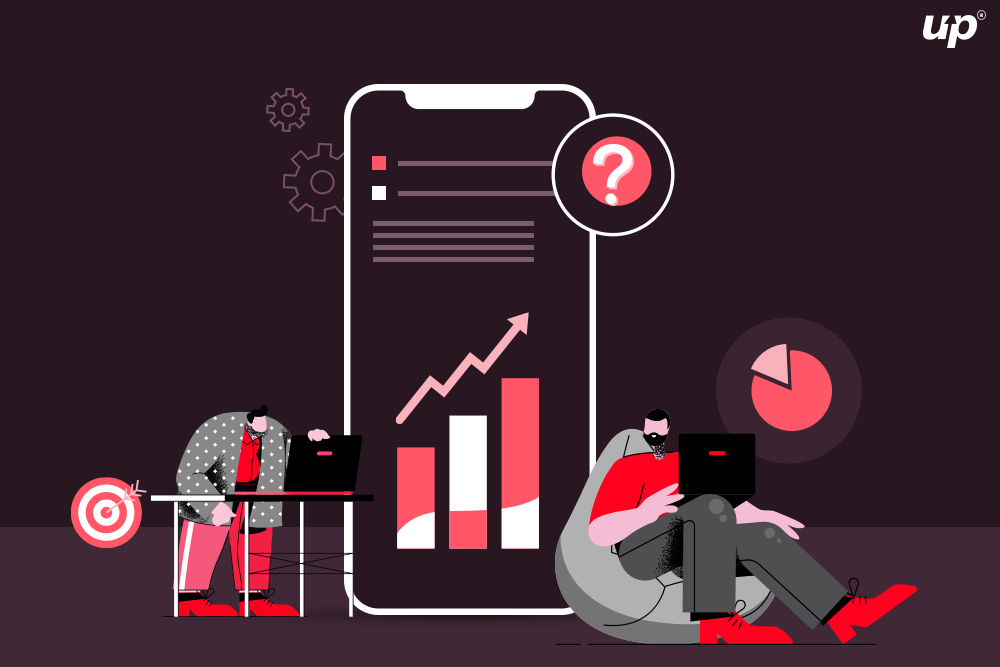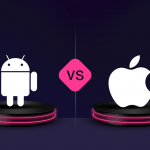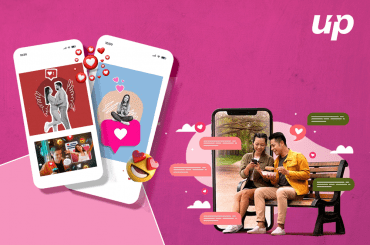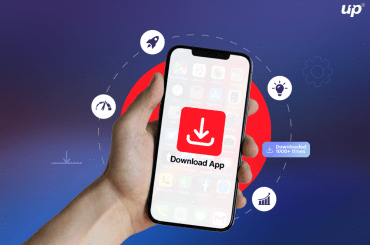To gain great ratings, and expand your user base, hire a mobile app development company. It helps you to make money via in-app purchases, e-commerce, or subscriptions. An effective app marketing approach focuses on user retention. Let’s examine how to develop and implement a mobile app engagement plan to keep loyal people visiting your business
Why Is Increasing App Engagement Important in App Development Services?
Any interaction a user has with a mobile app is referred to as app engagement. Users are more engaged with your app the longer they use it, the more material they view, and the more screens they interact with.
Engaged mobile app users your goods and services and invest more time and money. To inform product development and a mobile marketing strategy under app development services that provide a converting tailored experience via many touch points. You can create more data and get user feedback from them.
10 App Engagement Strategies for Modern Brands
Engaging users is a difficult task. Every day, new businesses enter the market as consumer demands rise. To provide a modern app experience, it would also be excellent. If you keep up with emerging technology update your user interface (UI).
The newest app engagement techniques for producing a memorable user experience are listed below:
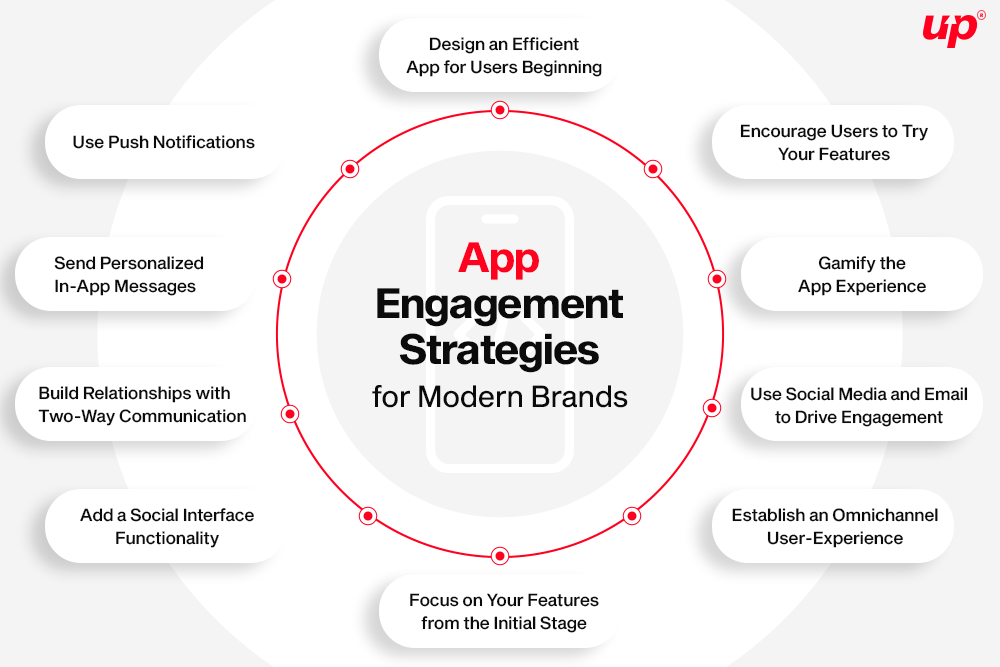
1. Design an Efficient App for Users Beginning
If new users can’t use your software to do their goals, they won’t use it again. Create a simple onboarding process to provide a good first impression and cut users’ barriers to using your app and taking advantage of its capabilities.
Reduce the number of steps required to establish an account, introduce new features into the context of the user flow, and use teaching through action to assist users in understanding the key app interaction motions.
2. Use Push Notifications
Even when users don’t have your app open, push notifications to let you share updates, offer useful information, and maintain user interest. Push alerts that are tailored can reduce abandonment rates from 25% to 19%.
In addition to communicating updates and new content under AR app development services, push notifications can also be used to provide a personalized experience. For example, you could advertise discounts on items that users have looked at, give users discounts on their birthdays, re-engage dormant users, or send people to a nearby store.
3. Encourage Users to Try Your Features
Users might not get the chance to try out every feature of your software. You may encourage customers under custom mobile application services to stay on and use crucial features by highlighting some of them in your app store description, the welcome screens, and the onboarding process.
Instead of clogging the UI with instructions, install in-app messaging to provide users with brief, contextual recommendations that will help them navigate the app’s many features, motivate them to take on certain activities, or discover things they haven’t used before.
4. Send Personalized In-App Messages
As opposed to the 49% user retention rate attained by generic advertising, in-app communications, and marketing efforts tailored for specific users based on the profile or behavioral data shows an app retention rate of 61% to 74% within 28 days.
When users interact with the content and features of your app, personalized in-app messages help you engage with them. This enables you to give relevant experiences (such as product recommendations) to enhance retention and conversions.
5. Gamify the App Experience
By allowing app users to compete against one another, their contacts, and other users, you can boost their engagement. Users who utilize gamified apps are more exercise, save money, engage in interactive learning, etc. When consumers use your app and see results, they’re more inclined to return and recommend it to others.
To assist users in visualizing their progress under custom mobile application services, highlight recent accomplishments, and inspire them to explore the app’s capabilities, create an appealing scoreboard using graphs and charts. Encourage the user to tell their social network about their success after completing a challenge or achieving a goal.
6. Build Relationships with Two-Way Communication
You can offer clients real-time support to resolve problems, address inquiries, allay worries, and finish transactions when and when they need it via in-app messaging. The prompt responses can reduce annoying incidents that might make users reluctant to use your software again.
Additionally, you may engage users using in-app chat to foster connections through one-on-one chats, direct them to pertinent features or content, and gather feedback to guide the creation of new features.
7. Use Social Media and Email to Drive Engagement
Retargeting on social media and email are good ways to interact with users who aren’t using your app. To encourage them to try your most well-liked features, for instance, you could send a series of onboarding emails. You could also keep in touch with them by engaging with them on their social media feeds.
Utilize data analytics to identify users who are to leave and send them individualized offers and content to re-engage them. Emails can also be used to draw attention to particular features depending on user behavior or profile data.
To reduce friction as much as possible along the user journey, include a call-to-action (CTA) in your emails and use deep linking to send customers to the most pertinent area of the app (instead of the home screen).
8. Add a Social Interface Functionality
Users must interact with other users to remain interested in an app. You can 2.7 times your user retention with the aid of an in-app community. mobile app development company makes sense that social+ is gaining so much traction thanks to social+ gaming, finance, payment, and other services.
Make a section in your app where users can communicate with other users or have private talks with their friends. Include audio, video, and chat features to enhance the experience, and use content moderation tools to establish a secure area while giving an in-line-with-brand experience.
9. Establish an Omnichannel User-Experience
Delivering a consistent customer experience across all channels and customer touchpoints is the goal of omnichannel marketing. By offering help, goods, and services via websites, mobile apps, SMS, social media, email, live chat, and physical locations like kiosks and storefronts, the aim is to create total user involvement.
Building confidence requires consistency and timeliness across all mediums. To give a consistent brand voice and individualized service, all channels must work in unison.
Establish KPIs to gauge user involvement both within and between channels. Make sure your staff is aware of the KPIs and that resources are allocated by them based on the channels that are most successful at reaching your target audience.
10. Focus on Your Features from the Initial Stage
The first thing users will notice about your brand when they come across it is your value proposition under app development services. It’s crucial to capture their interest by demonstrating how your software will benefit them by helping them solve an issue, save time, or improve their life.
Your value proposition serves as the foundation of your mobile engagement approach. Make sure your value proposition is simple, and that the installation and onboarding processes reinforce the point at each stage of the journey. By providing the ideal solution to your clients’ most pressing demands, you can deliver real value.
Also, Read About:- https://www.fluper.com/blog/all-you-need-to-know-about-mobile-apps-development-and-security-2023/
Conclusion
You may gain insights to direct AR app development services, optimize the app experience, and distribute relevant content. Build meaningful interactions by asking users for input and evaluating behavioral data and KPIs.
For many apps, adding a social layer has proven to be a successful strategy. Since the community aspect provides a long-term means of retaining users and boosting engagement. The most efficient and scalable engagement-boosting strategies include native, in-app chat and messaging features. It keeps a simple user interface and a community element.

